1,071 news posts
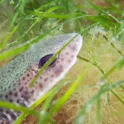
Environment
04 Mar 2021
Seagrass loss around the UK may be much higher than previously thought
By Suzanna Burgelman, Frontiers science writer Dogfish between seagrass. Image: Frogfish Photography The United Kingdom (UK) could have lost as much as 92% of historic seagrass meadows, a new study shows. These seagrass meadows are an essential part of healthy marine ecosystems, supporting the UK’s fish stocks, and helping to absorb and trap carbon from the atmosphere. The research highlights an urgent need to protect and restore current and degrading seagrass meadows. The loss of seagrass in the waters around the UK is much higher than previously estimated. A new study published in Frontiers in Plant Science concludes that, with high certainty, at least 44% of the UK’s seagrasses have been lost since 1936, of which 39% has been since the 1980s. This study is one of the first of its kind to bring together seagrass data from diverse sources and give a systematic estimate of the current and historic extent of seagrass, as well as seagrass loss in the UK. The study was a collaboration between researchers at University College London, Kings College London, and Swansea University. Read original article Download original article (pdf) Seagrasses as climate change superheroes Nature-based solutions are essential to mitigate the effects of the […]

Life sciences
26 Feb 2021
New open-source platform accelerates research into the treatment of heart arrhythmias
By Rozi Harsanyi / School of Biomedical Engineering & Imaging Sciences, King’s College London Image: megaflopp / Shutterstock An open-source platform, OpenEP co-developed by researchers from the School of Biomedical Engineering & Imaging Sciences at King’s College London has been made available to advance research on atrial fibrillation, a condition characterized by an irregular and often fast heartbeat. It can cause significant symptoms such as breathlessness, palpitations and fatigue, as well as being a major contributor to stroke and heart failure. Current research into the condition involves the interpretation of large amounts of clinical patient data using software written by individual research groups. But a new study recently published in Frontiers in Physiology shows that the OpenEP platform, developed in collaboration between King’s College London, the University of Edinburgh, Invicro, a Konica Minolta Company, Guy’s and St Thomas’ NHS Foundation Trust and Imperial College London, is capable of doing close to 90 per cent of the types of analyses that are performed in contemporary electrophysiology studies, enabling researchers to focus on their specific hypothesis or research question. Having a standardized way of using data processing techniques can also help to make them reproducible for other scientists. Lead author, Dr Steven […]
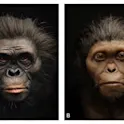
Featured news
26 Feb 2021
Team reveals amazing reconstructions of our ancestors to correct mistakes of the past
How to ensure accuracy in soft tissue reconstructions of early hominins such as Lucy? A review in Frontiers in Ecology and Evolution
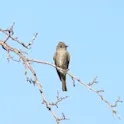
Featured news
26 Feb 2021
Improving water quality could help conserve insectivorous birds — study
Scarcity of insect prey in disturbed lakes and streams contributes to bird decline, show new results By Anna Sigurdsson and Mischa Dijkstra, science writers A new study shows for the first time that the alarming decline in insectivorous birds across the US may be due to a decline of emergent insects in lakes and streams with poor water quality. These findings highlight the need for holistic conservation across terrestrial and aquatic ecosystems. Western wood-pepee, Contopus sordidulus. Image: vagabond54/Shutterstock A new study shows that a widespread decline in abundance of emergent insects – whose immature stages develop in lakes and streams while the adults live on land – can help to explain the alarming decline in abundance and diversity of aerial insectivorous birds (ie preying on flying insects) across the US. In turn, the decline in emergent insects appears to be driven by human disturbance and pollution of water bodies, especially in streams. This study, published in Frontiers in Ecology and Evolution, is one of the first to find evidence for a causal link between the decline of insectivorous birds, the decline of emergent aquatic insects, and poor water quality. Human activities, such as urbanization and agriculture, have adverse effects on […]
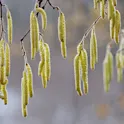
Featured news
25 Feb 2021
Allergy season starts earlier each year due to climate change and pollen transport
Long-distance pollen affects length of allergy seasons in Germany: Frontiers in Allergy
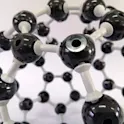
Engineering
24 Feb 2021
Buckyballs on DNA for harvesting light
Supramolecular structure boosts efficiency of light harvesting for solar cells By Mischa Dijkstra, Frontiers science writer Researchers from the Karlsruhe Institute of Technology show that DNA can serve as a scaffold for light-harvesting supramolecules, where fluorescent dyes work as electron donors and buckyballs as electron acceptors. The DNA’s regular 3D structure increases the light-to-electrons conversion efficiency by reducing so-called self-quenching. Such DNA-based supramolecules could be used in future organic solar cells. Image: Yes058 Montree Nanta/Shutterstock Organic molecules that capture photons and convert these into electricity have important applications for producing green energy. Light-harvesting complexes need two semiconductors, an electron donor and an acceptor. How well they work is measured by their quantum efficiency, the rate by which photons are converted into electron-hole pairs. Quantum efficiency is lower than optimal if there is “self-quenching”, where one molecule excited by an incoming photon donates some of its energy to an identical non-excited molecule, yielding two molecules at an intermediate energy state too low to produce an electron-hole pair. But if electron donors and acceptors are better spaced out, self-quenching is limited, so that quantum efficiency improves. In a new paper in Frontiers in Chemistry, researchers from the Karlsruhe Institute of Technology (KIT) […]
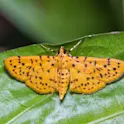
Life sciences
24 Feb 2021
Red light put moths in the mood
Red lights makes moth antennae more sensitive to sex pheromones, stimulating mating: Frontiers in Genetics

Earth science
22 Feb 2021
Jingmai O’Connor: ‘I think people imagine we spend far more time digging up fossils than we actually do’
By Colm Gorey, Frontiers science writer/Jingmai O’Connor Jingmai O’Connor, associate curator of fossil reptiles at Chicago’s Field Museum. Image: Jesse Goldberg Jingmai O’Connor, associate curator of fossil reptiles at Chicago’s Field Museum, discusses a recent ‘bizarre’ ancient digestive discovery and the issue of diversity in paleontology. In a recently published study to Frontiers in Earth Science, researchers from the Chinese Academy of Sciences and the Field Museum in the US published findings on the discovery of quartz crystals in the stomach of a fossilized bird that lived alongside the dinosaurs. According to Jingmai O’Connor, the associate curator of fossil reptiles at Chicago’s Field Museum who contributed to the paper, it appeared to be “some kind of bizarre form of soft tissue preservation that we’ve never seen before”. She added: “Figuring out what’s in this bird’s stomach can help us understand what it ate and what role it played in its ecosystem.” O’Connor is an American paleontologist whose research focuses on the dinosaur-bird transition and the Mesozoic evolution of birds and other flying dinosaurs. Her research includes studies of exceptional soft tissues, such as lung and ovary traces preserved in specimens from Jehel Biota between 130 million and 130 million years ago. […]

Featured news
22 Feb 2021
Prof Gisli H Gudjonsson: 40 years’ worth of scientific research shows anyone can be coerced into a false confession
Prof Gisli H. Gudjonsson reviews the forensic science of false confessions: Frontiers in Psychology

Featured news
22 Feb 2021
Life from Earth could temporarily survive on Mars
Researchers send microbes to Earth’s stratosphere to test if these could survive on Mars: Frontiers in Microbiology

Health
17 Feb 2021
CT scans of Egyptian mummy reveal new details about the death of a pivotal pharaoh
How did Egyptian pharaoh Seqenenre-Taa-II die? Frontiers in Medicine

Featured news
16 Feb 2021
Biotech fit for the Red Planet
Cyanobacteria can grow under a N2-CO2-rich low-pressure atmosphere with only water and nutrients from Mars dust: Frontiers in Microbiology
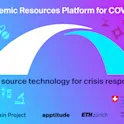
Health
16 Feb 2021
COVID-19 crisis – a technology providing unconventional supply relief
By Kate E. Mullins / EPFL Credit: Felix Schürmann and coauthors When the full-scale effect of the COVID-19 pandemic was starting to be understood in early 2020, the EPFL Blue Brain Project and ETH Zurich, as part of the Swiss National COVID-19 Science Task Force, began collaborating with Spiez Laboratory on an online Platform – Academic Resources for COVID-19 (ARC). In a paper published in Frontiers for Public Health, the authors explain how the ARC Platform was set up to be a service to support Swiss diagnostic laboratories that are testing for SARS-CoV-2. The ARC Platform matched requests for critical equipment, reagents and consumable goods required by Swiss diagnostic laboratories involved in combating COVID-19 with supplies available from Swiss academic groups. Since then, with further input from Swiss startup Apptitude SA, the Platform has evolved with the needs of the epidemiological situation and the technology has been open sourced with the purpose to serve public health as a response solution for other countries and communities in the current COVID-19 crisis or in future crises. In the beginning of the first wave of the COVID-19 pandemic in Switzerland, diagnostic testing had to be ramped up in a very short time, but even basic molecular […]
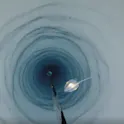
Earth science
15 Feb 2021
Strange creatures accidentally discovered beneath Antarctica’s ice shelves
Prior research has suggested that the watery depths below the Antarctic ice shelves are too cold and nutrient poor to sustain much life. But a new study from British Antarctic Survey reveals the discovery of a colony of sponges and other animals attached to a boulder on the sea floor – challenging researchers’ understanding about the existence of life in extreme environments. British Antarctic survey camera travelling down the 900-meter-long bore hole in the Filchner-Ronne ice shelf. (marine creature pictured is unrelated to the discovery) CREDIT: Dr Huw Griffiths/British Antarctic Survey By K.E.D Coan, science writer/British Antarctic Survey Far underneath the ice shelves of the Antarctic, there’s more life than expected, finds a recent study in the journal Frontiers in Marine Science. During an exploratory survey, researchers drilled through 900 meters of ice in the Filchner-Ronne Ice Shelf, situated on the south eastern Weddell Sea. At a distance of 260km away from the open ocean, under complete darkness and with temperatures of -2.2°C, very few animals have ever been observed in these conditions. But this study is the first to discover the existence of stationary animals – similar to sponges and potentially several previously unknown species – attached to a boulder […]

Health
12 Feb 2021
Research highlights ways to protect astronaut cardiovascular health from space radiation
Does space radiation damage the cardiovascular health of astronauts? Frontiers in Cardiovascular Medicine